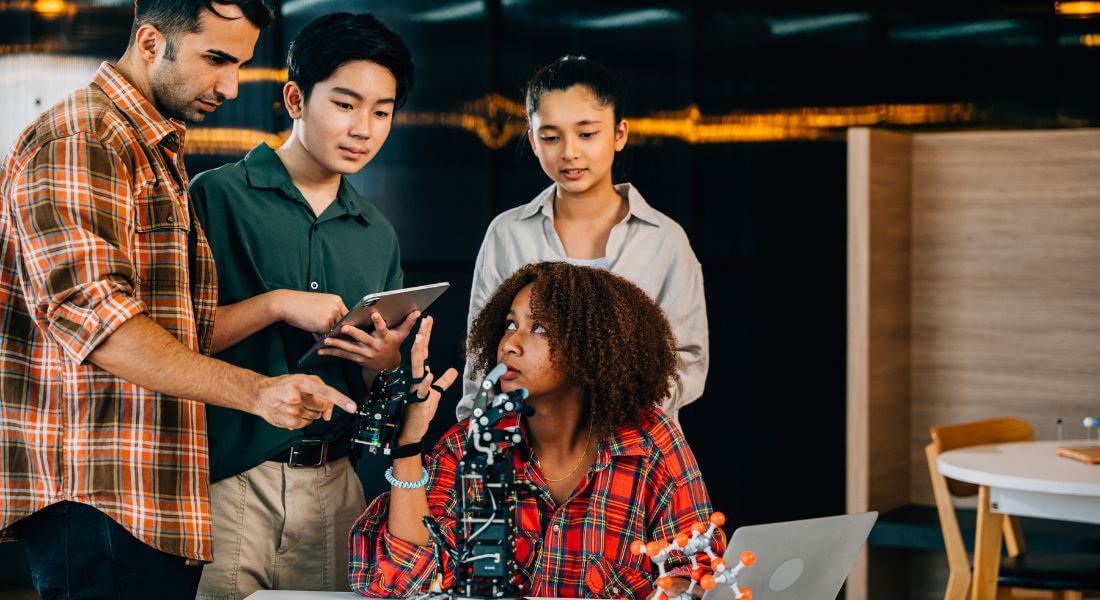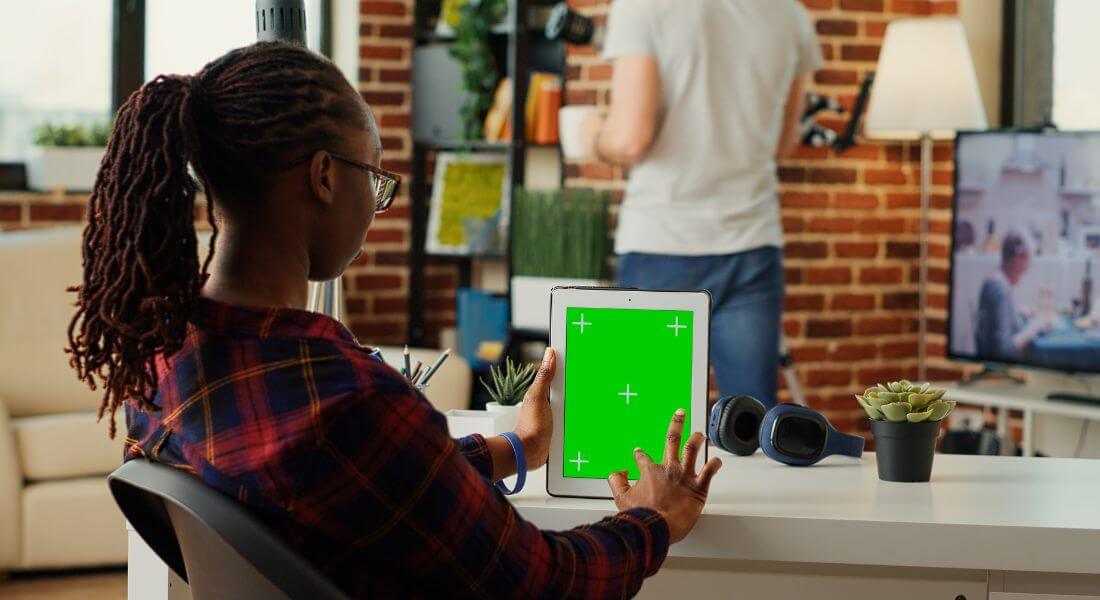
Animation today is breaking free from the limitations of flat screens and traditional devices. Thanks to the rapid advancement of Augmented Reality (AR) technology, animated elements are no longer restricted to being viewed in isolation; instead, they are being seamlessly woven into the fabric of our physical surroundings. This exciting fusion of digital animation and real-world environments is transforming how people engage with content, creating immersive experiences that feel interactive, tangible, and deeply personal. Whether it’s through mobile apps, AR glasses, or interactive displays, animation in AR is changing the game for multiple industries by making storytelling and user engagement more dynamic and memorable. One of the most powerful benefits of combining animation with AR is its ability to provide context-rich, real-time information that users can interact with naturally. For example, in retail, customers can visualise animated product demonstrations directly on their own kitchen counters or try on virtual clothing that moves and responds as they do. In education, AR animations bring abstract concepts to life, turning static textbook pages into living, breathing lessons that capture students’ imaginations. These real-world integrations help deepen understanding and retention by making content feel relevant and immediate.
Moreover, the blending of AR and animation is opening new avenues for brands to create unique, shareable experiences that stand out in an increasingly crowded digital landscape. Marketing campaigns are leveraging AR animations to surprise and delight audiences, fostering stronger emotional connections and encouraging social sharing. As AR technology becomes more accessible and animation tools become more sophisticated, we can expect this trend to accelerate, blurring the boundaries between physical and digital storytelling even further. Ultimately, AR-driven animation is not just enhancing how we consume content it’s reshaping the very way we experience and interact with the world around us.
How AR and Animation Work Together

At its core, augmented reality (AR) technology works by superimposing digital objects onto the physical world, visible through devices such as smartphones, tablets, or specialized AR glasses. These digital elements exist within the user’s real environment, creating a mixed-reality experience that blends virtual content seamlessly with tangible surroundings. However, it is animation that truly brings these digital overlays to life. By adding movement, interactivity, and responsiveness, animation transforms static images or models into engaging, dynamic experiences that captivate users. Whether it’s a playful character walking across your kitchen counter, a detailed product demonstration hovering above a tabletop, or interactive educational content that reacts to user gestures, animation injects personality and emotional resonance that still images simply cannot provide.
The process behind this integration involves a variety of advanced animation techniques such as rigging, keyframing, and real-time rendering. Animators meticulously design 3D or 2D animated content that can react fluidly to user input, environmental changes, and spatial orientation. For example, a virtual object might adjust its position as a user moves around it or change expressions based on touch or voice commands. This level of interactivity creates a visually stimulating and immersive experience that goes far beyond passive viewing. For brands, educators, and creators, these capabilities translate into more memorable messaging, stronger emotional connections, and significantly increased user engagement. By merging AR with expertly crafted animation, content becomes not only more accessible but also profoundly impactful, inviting users to interact with digital stories and information in ways that feel intuitive, exciting, and deeply personal.
Real-World Applications Across Industries
Augmented reality combined with animation is transforming how businesses and educators connect with their audiences. By merging digital motion graphics with physical environments, AR animation creates immersive, interactive experiences that captivate users and enhance understanding. Across multiple industries, this powerful technology is reshaping traditional approaches making marketing more engaging, education more hands-on, and retail experiences more personalized.
Moreover, AR animation is fostering new opportunities for creativity and innovation, enabling companies to experiment with storytelling techniques that were previously impossible. This fusion not only elevates user experience but also drives deeper engagement, stronger brand loyalty, and measurable business outcomes, positioning AR animation as a game-changer in the digital transformation journey.
- Marketing and Advertising
Businesses are leveraging AR animation to deliver high-impact campaigns. Interactive billboards, QR-triggered product previews, and branded AR filters on social media allow customers to engage with products in a more personal and immersive way. For instance, beauty brands let users virtually try on makeup using animated AR overlays, increasing both engagement and conversion rates. - Education and Training
Animated AR models are changing the classroom and professional training environments. Imagine learning human anatomy by interacting with a floating, animated 3D model of the human body. Or consider technical fields where AR training modules simulate real-world scenarios for hands-on learning without risk. Animation enhances clarity and memory retention, turning passive learning into an active experience. - Retail and E-Commerce
Retailers use AR animation to visualise furniture in a customer’s room or demonstrate product functionality in 3D. Customers can see how a chair looks next to their existing couch or watch an animated guide on how to assemble a shelf. This creates an informed buyer and reduces return rates, ultimately boosting satisfaction and sales.
Benefits of Merging Animation with AR

The powerful fusion of animation and augmented reality (AR) brings a wide range of benefits that are reshaping how brands, educators, and creators communicate with their audiences. By combining the immersive qualities of AR with the dynamic and expressive nature of animation, this technology creates experiences that are not only visually stunning but also deeply impactful and memorable. Here are some of the key advantages that make merging animation with AR such a compelling approach:
- Enhanced storytelling: Animation adds motion, personality, and emotional depth to AR content, helping brands tell their stories in a far more engaging and captivating way. Animated characters and visual effects can bring abstract ideas to life, making narratives easier to follow and more enjoyable for users. This blend creates immersive storytelling experiences that resonate on both intellectual and emotional levels.
- Increased engagement: Interactive animated AR applications tend to hold users’ attention for longer periods compared to static or non-animated content. The movement and responsiveness of animated elements encourage users to explore, interact, and spend more time immersed in the experience. This increased engagement translates into better brand recall, deeper learning outcomes, and higher satisfaction rates.
- Improved accessibility: Animation is a powerful tool for simplifying complex or technical concepts, making them more understandable and approachable for diverse audiences. When paired with AR, these animated explanations become interactive and spatially contextualised, allowing users to grasp difficult ideas through intuitive visual cues and hands-on interaction. This improves learning retention and reduces cognitive overload.
- Memorable experiences: Users are far more likely to remember and share experiences that combine the wonder of AR with the expressiveness of animation. The novelty and interactivity of animated AR content create lasting impressions that cut through the noise of traditional marketing or educational materials. This memorability not only boosts word-of-mouth but also strengthens brand loyalty and user connection.
Challenges in AR Animation

Despite the exciting potential of AR animation, the technology still faces several significant challenges that creators must carefully navigate to deliver effective and enjoyable experiences.
One major technical hurdle is real-time rendering. Because AR animations must be processed and displayed instantly on devices like smartphones, tablets, or AR glasses, the graphical demands can be quite taxing. Ensuring smooth, high-quality animation without lag or glitches requires careful optimisation of assets, coding efficiency, and hardware compatibility. Any delay or stutter in rendering can break immersion and frustrate users. Another challenge lies in user experience (UX) design. Designers need to create AR animations that enhance, rather than hinder, the user’s interaction with their environment. This involves avoiding sensory issues such as motion sickness caused by rapid or disorienting animations. It’s also critical to ensure that animated content doesn’t overcrowd the user’s field of vision or cause confusion by overlapping with real-world objects in unnatural ways.
In addition, accessibility remains a vital consideration. AR animations should be inclusive, catering to users with varying abilities, including those with visual impairments or sensitivity to motion. Designing intuitive interfaces that work across diverse user groups is key to broad adoption. Cultural sensitivity is another important factor. What may be perceived as intuitive, playful, or engaging in one culture might be confusing, irrelevant, or even offensive in another. As AR content reaches a global audience, creators must invest time in understanding cultural nuances and tailoring designs accordingly to avoid miscommunication or alienation.
To summarise, successful AR animation requires balancing the following points:
- Overcoming technical limitations like device performance and real-time rendering constraints
- Designing seamless user experiences that minimise motion sickness and visual clutter
- Ensuring accessibility for users with different needs and abilities
- Incorporating cultural awareness to resonate with diverse global audiences
The Future of AR Animation
As augmented reality technology continues to advance and mature, the role of animation within this space is set to become even more essential and transformative. Emerging innovations in spatial computing, hand and gesture tracking, and AI-powered interactions are pushing the boundaries of what animated AR experiences can achieve. These developments will make animated elements not only more visually impressive but also far more intuitive, responsive, and immersive creating seamless blends between the digital and physical worlds that respond naturally to user behavior and context. Looking ahead, we can anticipate a wide range of groundbreaking applications. For instance, personalized shopping assistants powered by animated AR avatars could guide customers through virtual stores, offering tailored recommendations and real-time demonstrations. Similarly, gamified learning environments will evolve to adapt dynamically to each user’s progress and preferences, using animation to create engaging, interactive lessons that motivate and educate in ways never before possible. Beyond commerce and education, industries like healthcare, architecture, and entertainment will also benefit from richly animated AR experiences that enhance communication and user engagement on multiple levels.
This exciting evolution brings new opportunities and challenges for animators as well. To stay at the forefront of AR animation, creators will need to develop mastery of cutting-edge AR platforms and real-time rendering engines such as Unity and Unreal Engine. Technical skills in 3D modelling, rigging, and interactive design will be essential, alongside traditional animation expertise. The future of AR storytelling will increasingly depend on close collaborations between animators, software developers, UX designers, and other specialists. Together, these multidisciplinary teams will pioneer innovative workflows and storytelling techniques that push the limits of digital creativity.
FAQ
1. How is animation used in AR marketing?
Animation in AR marketing helps brands create interactive ads that engage users in real-time. It allows users to visualise products, explore features, and even experience narratives that unfold in their physical space, enhancing memorability and brand impact.
2. What industries benefit most from AR animation?
While marketing and retail are popular sectors, AR animation also benefits education, healthcare, architecture, and entertainment. It allows for immersive learning, real-time simulations, and visualisation tools that enhance decision-making and understanding.
3. What skills are needed to create AR animations?
Creating AR animations requires a blend of animation design, 3D modelling, real-time rendering, and programming skills especially in tools like Unity or Unreal Engine. Knowledge of AR development frameworks like ARKit or ARCore is also crucial.
4. Can AR animation be used without headsets or glasses?
Yes, most current AR experiences work on smartphones or tablets using their built-in cameras and sensors. While wearables are emerging, handheld AR remains the most accessible and widely used platform.
5. How does AR animation improve learning?
AR animations turn abstract concepts into visual, interactive experiences. This helps students understand complex ideas more effectively by engaging multiple senses and encouraging active exploration.
6. What are common challenges in AR animation development?
Challenges include device performance limitations, latency, accurate environmental tracking, and ensuring intuitive user experience. Developers must also test across different devices to maintain consistency.
7. Is AR animation expensive to implement?
Costs can vary based on complexity, but tools and frameworks are becoming more accessible. Simple AR animations can be built with modest budgets, especially for marketing and education.
8. What is the role of sound in AR animation?
Sound plays a crucial role in enhancing immersion. Spatial audio can guide attention, create ambiance, and reinforce visual cues, making AR experiences more lifelike and memorable.
9. How secure is user data in AR animation experiences?
Security depends on the platform and app. Developers must follow best practices for privacy and data encryption, especially when AR apps collect user location or behaviour data.
10. Can AR animation be integrated with AI for smarter interaction?
Yes, combining AR with AI can enable responsive characters, adaptive learning experiences, and real-time feedback systems. This hybrid approach is growing in fields like training and customer service.
Conclusion
Augmented reality animation is no longer just a futuristic concept reserved for science fiction or experimental projects it has firmly established itself as a practical, present-day tool that is fundamentally reshaping the ways in which we learn, shop, communicate, and connect with the world around us. As AR technology continues to evolve and becomes increasingly accessible to businesses and consumers alike, its influence is set to expand exponentially across a wide variety of industries and applications. For brands, educators, and creators who are willing to embrace this wave of innovation, AR animation offers a unique and powerful opportunity to stand out from the competition, deliver engaging educational content, and inspire deeper emotional connections with audiences. By blending the digital and physical realms, augmented reality animation is opening up new possibilities for storytelling, interaction, and experience design that simply weren’t possible before making it an essential tool for anyone looking to make a lasting impact in today’s fast-paced digital landscape.
Final Thoughts: Embracing the Future with Animated Augmented Reality
Blending animation with augmented reality isn’t just a technological advancement it represents a fundamental paradigm shift in how we communicate, learn, and experience the world around us. By seamlessly adding motion, emotion, and interactivity to our physical surroundings, animated AR transforms what was once passive observation into an engaging, immersive experience that invites active participation and deeper connection.
Looking to take your content to the next level? Get in touch with our animation company in London and let’s bring your vision to life. Whether you’re developing an innovative marketing campaign, a cutting-edge educational app, or a fully immersive retail experience, the fusion of digital animation and physical reality holds immense potential to reshape the user journey. As augmented reality adoption continues to accelerate across industries, staying ahead of this transformative curve could be the key to distinguishing your brand in an increasingly crowded digital landscape and capturing lasting audience attention.

